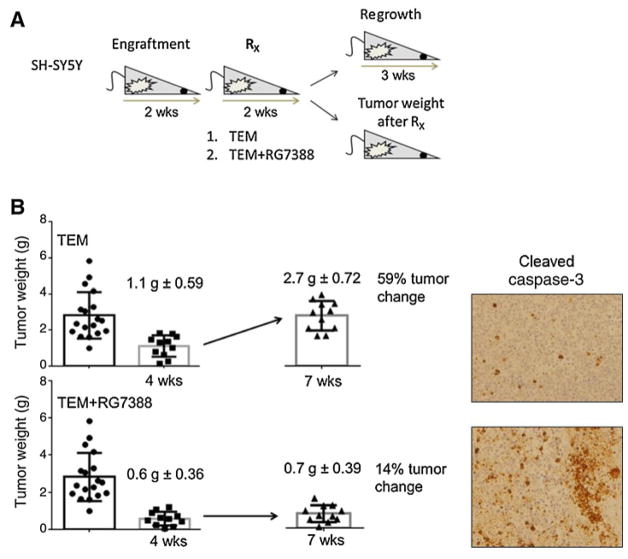Figure 4.
The combination therapy temsirolimus and RG7388 blocks tumor regrowth after treatment withdrawal. A, Schematic representation of the experimental design. SH-SY5Y neuroblastoma cells were orthotopically injected, and three treatment groups of 20 mice each generated: control, temsirolimus (10 mg/kg) as single agent, and temsirolimus in combination with RG7388 (25 mg/kg). After 2 weeks of treatment, half of the mice were sacrificed and tumor weight assessed, and half of the mice kept alive without any additional treatment for 3 weeks. Tumors were followed for 3 weeks after their last treatment. B, Average tumor weights for each cohort ± SEM and percentage of tumor change after 2 weeks of treatment and 3 weeks of treatment withdrawal are shown. Single-agent temsirolimus is ineffective in controlling tumor regrowth. However, there is no evidence of tumor regrowth upon dual therapy. Cleaved caspase 3 immunostaining of representative tumor samples from each cohort after 3 weeks of treatment withdrawal is shown.

